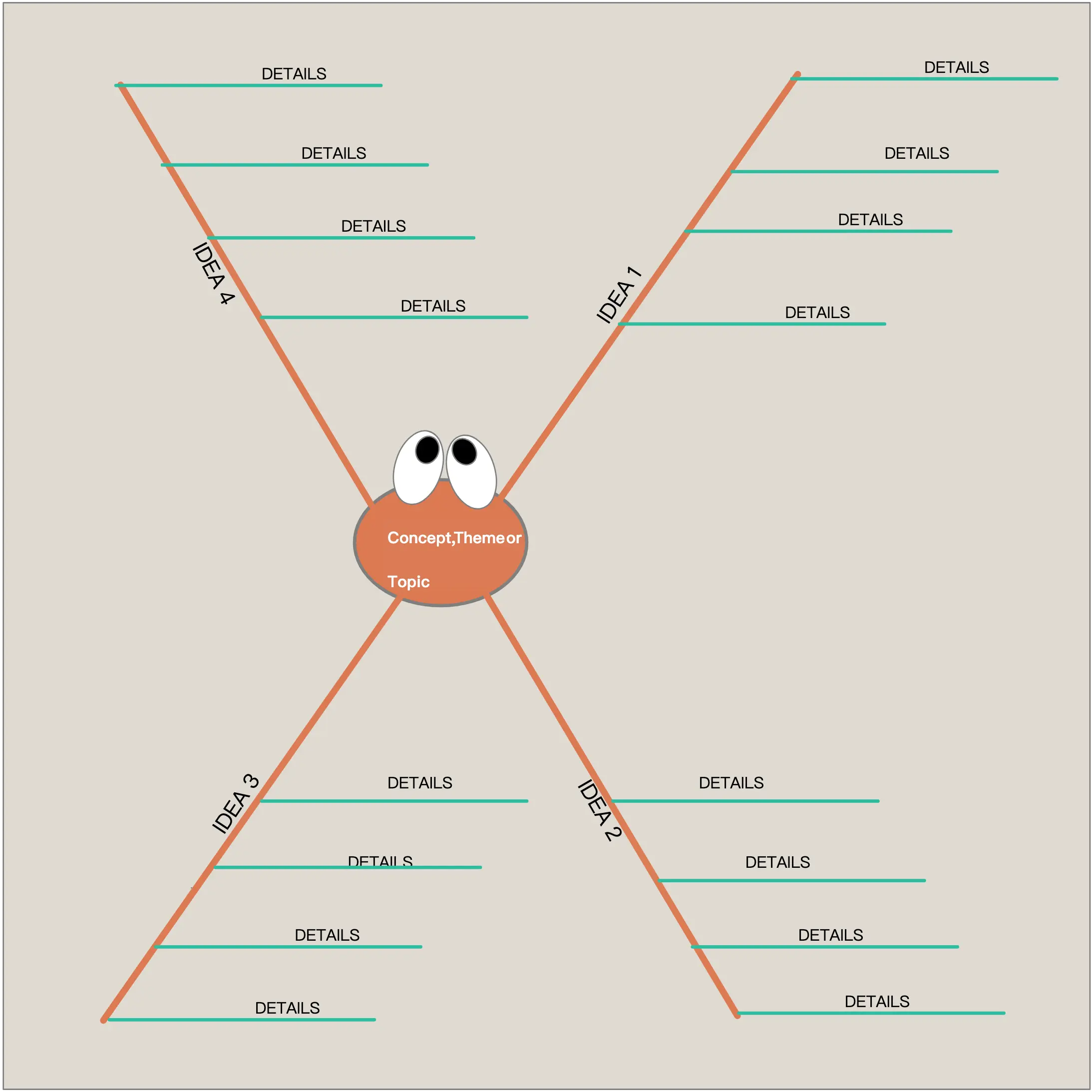
[7 Amazing Reasons] Why Spider Maps Are a Powerful Tool for Learning and Creativity
Explore the benefits of spider maps for learning, creativity, and productivity.
Education Consultant
![[7 Powerful Reasons] Why Hierarchical Maps Are Amazing for Key Industries](/_astro/Cover Page.Dy8V15H3_OmzPG.webp)
In today’s fast-paced business environment, clarity and organization are key to staying ahead. One tool that has proven invaluable across various industries is the hierarchical map. Whether you’re dealing with complex systems, large datasets, or intricate workflows, hierarchical maps provide a visual representation that simplifies decision-making, improves communication, and enhances strategic planning. But what industries benefit the most from these amazing tools? Here’s a deep dive into seven powerful reasons why hierarchical maps are game-changers in specific sectors.
· Visualizing Complex Systems for Streamlined Troubleshooting
In the intricate world of IT and software development, where systems are composed of multiple layers and complex interdependencies, hierarchical maps serve as an indispensable tool. These maps allow IT professionals and developers to break down network architectures and software codebases into distinct layers, making it easier to identify and address issues efficiently. By providing a clear visualization of the entire system, hierarchical maps help teams streamline troubleshooting processes, reducing downtime and ensuring smoother operations. This targeted approach is crucial in a field where time is of the essence, enabling quick identification of problem areas and minimizing disruptions.
· Enhancing Collaboration and Project Management
Collaboration in IT and software development projects often involves diverse teams working together, from developers to system administrators. Hierarchical maps act as a common visual language that enhances communication across these teams, fostering a more cohesive working environment. They enable clear representation of system relationships, which aids in sharing insights and improving teamwork. Additionally, these maps are invaluable for project management, allowing managers to break down complex projects into manageable tasks, track progress, and allocate resources effectively. By providing a detailed roadmap, hierarchical maps ensure that projects stay on track, meet deadlines, and achieve their objectives with precision.
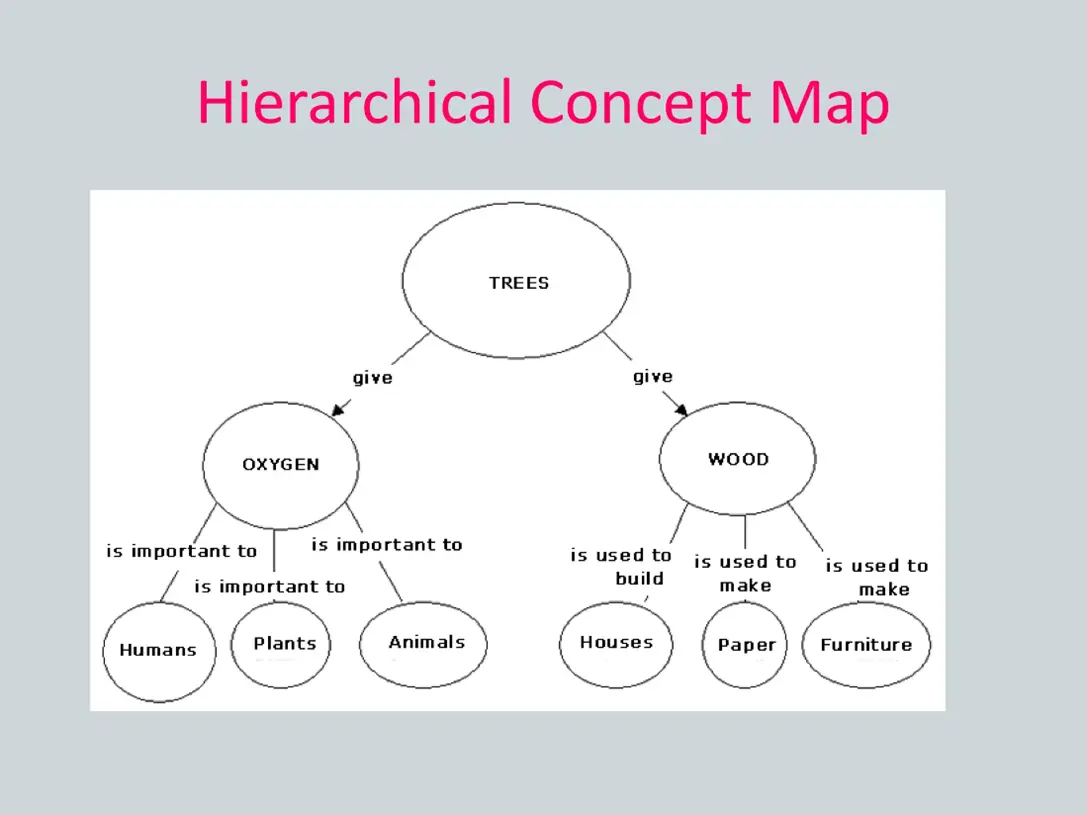
Source: https://www.slideshare.net/slideshow/concept-map-249526195/249526195#24
· Enhancing Patient Care Through Organized Information
In the healthcare industry, managing vast amounts of data, such as patient records, treatment histories, and research studies, is a constant challenge. Hierarchical maps play a crucial role in organizing this information, offering healthcare providers a clear and structured way to visualize relationships between symptoms, diagnoses, and treatment options. By mapping out these connections, healthcare professionals can make more informed decisions, leading to improved patient outcomes. The ability to see the entire scope of a patient’s medical history briefly enables doctors to identify patterns and correlations that might not be immediately apparent, ensuring that treatment plans are both comprehensive and tailored to individual needs.
· Streamlining Medical Research and Data Management
Medical research is another area where hierarchical maps prove to be invaluable. Researchers deal with complex datasets and numerous variables, making it essential to organize and structure their studies effectively. Hierarchical maps allow researchers to visualize the relationships between different data points, identify connections between various research findings, and structure their studies in a way that is both logical and accessible. Furthermore, these maps simplify the management of extensive medical records, ensuring that critical information is easy to access and analyze. This streamlined approach to data management not only enhances the efficiency of research but also contributes to the accuracy and reliability of medical studies, ultimately advancing the field of healthcare.
· Enhancing Learning Experiences Through Structured Content
In the education sector, both traditional and e-learning platforms have witnessed remarkable improvements through the use of hierarchical maps. Teachers and instructional designers leverage these tools to create well-structured lesson plans, organize educational content, and design curricula that are easy for students to follow. By presenting information in a clear, hierarchical structure, these maps enable students to grasp complex topics more intuitively, enhancing their overall learning experience. When information is broken down into manageable segments and visually organized, it becomes easier for students to understand and retain knowledge, making the learning process more engaging and effective.
· Curriculum Design and Personalized Learning Paths
Hierarchical maps are also instrumental in curriculum design, allowing educators to create curricula that logically build on foundational knowledge. This ensures a smooth progression from basic to advanced topics, helping students develop a solid understanding of each subject area before moving on to more complex concepts. Additionally, hierarchical maps support the creation of personalized learning paths, catering to the unique needs and learning paces of individual students. By visualizing the entire learning journey, educators can tailor instruction to address specific strengths and weaknesses, fostering a more personalized and effective educational experience that supports each student’s growth and success.

· Strategic Planning and Organizational Clarity
In the corporate world, hierarchical maps serve as a vital tool for strategy development and management consulting, enabling companies to visualize their business structure and operations with precision. These maps allow organizations to map out their goals, resources, and strategies in a way that ensures alignment across all departments and teams. By breaking down complex business structures into manageable components, hierarchical maps provide management with a clear overview of the entire organization. This clarity is essential for identifying inefficiencies, uncovering areas for improvement, and pinpointing where reorganization might be beneficial. The ability to see the big picture, while also diving into specific details, supports more informed decision-making and enhances overall organizational effectiveness.
· Enhancing Client Communication and Strategic Execution
For management consultants, hierarchical maps are particularly powerful when it comes to communicating complex strategies to clients. These maps provide a visual representation of strategic plans, making it easier for clients to grasp the full scope of recommendations. By organizing information in a structured and logical manner, consultants can ensure that even the most intricate strategies are presented in a clear and understandable way. This not only aids in client comprehension but also fosters greater buy-in for proposed changes. Additionally, hierarchical maps help companies execute their strategic plans more effectively, as they offer a roadmap that guides implementation, tracks progress, and ensures that all aspects of the strategy are aligned and moving toward the desired outcome.
· Optimizing Production Processes and Supply Chain Management
In the manufacturing industry, where efficiency and organization are paramount, hierarchical maps are invaluable for visualizing and optimizing complex processes. These maps allow manufacturers to break down their entire production process, from raw material sourcing to product delivery, into distinct, manageable stages. By mapping out these stages, companies can easily identify bottlenecks, inefficiencies, and areas where operations can be streamlined for maximum efficiency. This level of detail is crucial for ensuring that production runs smoothly and that resources are utilized effectively, ultimately leading to cost savings and increased productivity.
Hierarchical maps also play a critical role in supply chain management. Manufacturers can use these maps to visualize their entire supply chain, from the acquisition of raw materials to the final delivery of products to customers. This comprehensive view helps ensure that all components of the supply chain are in place and functioning as they should, reducing the risk of delays and disruptions. By having a clear representation of the supply chain, manufacturers can better coordinate with suppliers, manage inventory, and ensure timely production and delivery, which is essential for meeting customer expectations and maintaining a competitive edge in the market.
· Ensuring Quality Control and Compliance
Quality control is another area where hierarchical maps prove to be powerful tools in the manufacturing industry. By mapping out the quality control processes within the production chain, manufacturers can ensure that every step meets the required standards and complies with industry regulations. These maps provide a detailed visual guide that helps identify potential areas of risk, allowing for proactive measures to maintain high-quality output. Moreover, hierarchical maps facilitate better communication and training within the organization, as they offer a clear and structured overview of the quality control procedures that need to be followed.
With hierarchical maps, manufacturers can maintain consistency in production quality, minimize defects, and ensure that products meet both customer expectations and regulatory requirements. This focus on quality control not only enhances the reputation of the company but also reduces costs associated with rework and returns. Ultimately, hierarchical maps help manufacturers achieve a balance between efficiency, quality, and compliance, which is essential for long-term success in the competitive manufacturing landscape.
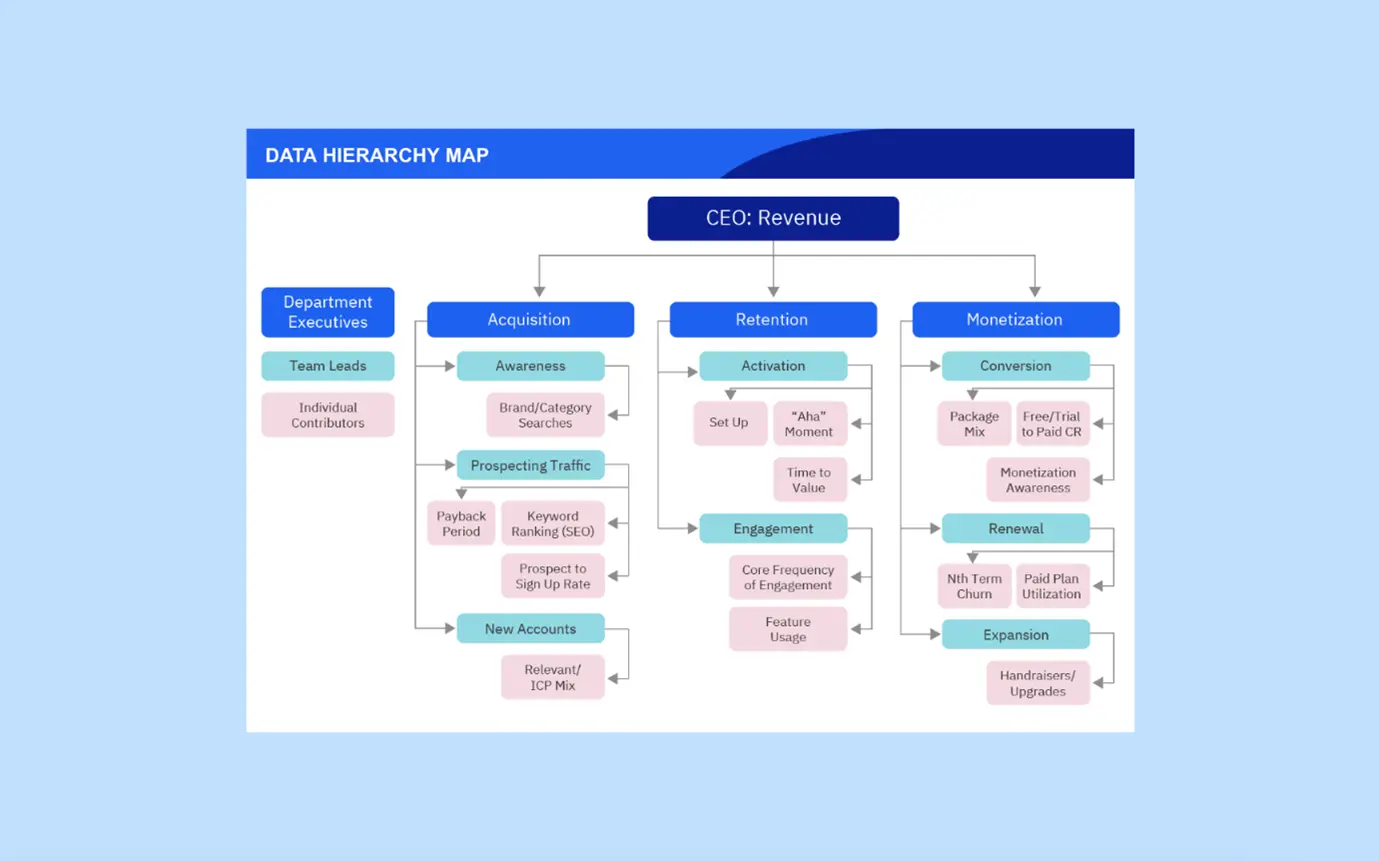
Source: https://amplitude.com/blog/data-hierarchy-map
· Visualizing the Customer Journey for Optimized Marketing Strategies
In the realms of marketing and product development, understanding the intricacies of the customer journey is vital for creating effective strategies that resonate with target audiences. Hierarchical maps serve as a powerful tool for visualizing this journey, enabling marketers to map out every stage, from initial awareness to the final purchase. By breaking down the customer journey into distinct touchpoints, these maps help ensure that each interaction is optimized for maximum conversion. Marketers can identify gaps, refine messaging, and tailor their strategies to meet customer needs more precisely. This structured approach not only enhances the overall customer experience but also increases the likelihood of successful outcomes, driving both engagement and sales.
· Managing Product Lifecycles and Planning Effective Campaigns
In addition to customer journey mapping, hierarchical maps are equally valuable in managing the product lifecycle—a critical aspect of product development. Product teams can use these maps to visualize the entire lifecycle of a product, from the initial ideation phase through to launch and beyond. This holistic view allows teams to anticipate challenges, manage resources effectively, and ensure that each stage of development aligns with both customer expectations and business goals. Hierarchical maps provide a clear roadmap for product development, facilitating better coordination among cross-functional teams and ensuring that products are brought to market efficiently.
Moreover, hierarchical maps are indispensable tools for campaign planning. Marketing teams can leverage these maps to plan and execute campaigns with precision, ensuring that all elements—from content creation to distribution—are coordinated and aligned with overarching business objectives. By visualizing the campaign structure, marketers can identify key milestones, allocate resources strategically, and track progress in real-time. This level of organization is crucial for executing successful campaigns that not only reach the target audience but also achieve desired outcomes, whether that’s increased brand awareness, lead generation, or driving sales.
· Structuring Policy Development for Comprehensive Solutions
In the realm of government and public policy, the complexity of developing and implementing policies requires a structured and methodical approach. Hierarchical maps are invaluable tools that policymakers can use to organize and structure policy initiatives. By breaking down policies into their component parts, these maps ensure that every aspect is thoroughly considered and addressed, from the initial problem identification to the implementation and evaluation stages. This comprehensive approach helps in creating robust policies that are well-rounded and effective. Additionally, hierarchical maps allow for the visualization of the interconnections between different policy components, enabling policymakers to foresee potential challenges and make informed adjustments before implementation. This level of detail is crucial for crafting policies that not only address immediate concerns but also contribute to long-term societal goals.
· Enhancing Public Service Delivery and Stakeholder Communication
For government agencies, hierarchical maps are equally essential in optimizing public service delivery. These maps enable agencies to visualize and streamline service delivery processes, identifying inefficiencies and areas for improvement. By mapping out these processes, government entities can ensure that resources are used efficiently, services are delivered effectively, and the needs of the public are met promptly. This structured approach to service delivery also supports continuous improvement, as agencies can regularly review and refine their processes based on the insights provided by the hierarchical maps.
Moreover, hierarchical maps are powerful tools for communication, particularly when it comes to conveying complex policies and initiatives to stakeholders. Government agencies and policymakers can use these maps to present information in a clear and organized manner, making it easier for stakeholders to understand the full scope and implications of proposed policies. This transparency not only fosters trust but also ensures that all parties involved are on the same page, facilitating smoother collaboration and more effective implementation of public policies.
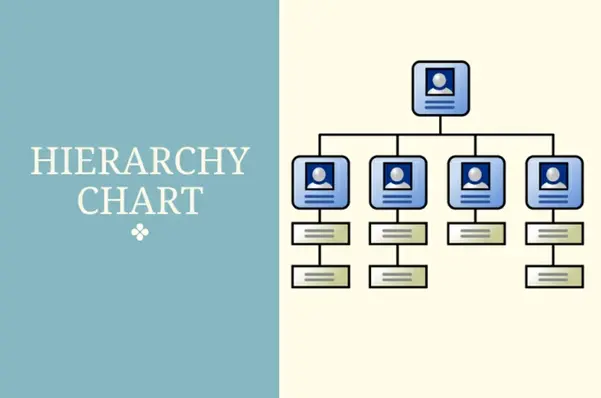
Source: https://gitmind.com/hierarchy-chart.html
Hierarchical maps are an amazing tool with powerful applications across a wide range of industries. From IT to healthcare, education to manufacturing, these visual aids enhance clarity, improve decision-making, and streamline processes. By integrating hierarchical maps into your industry practices, you can unlock new levels of efficiency and effectiveness, ensuring that your organization stays ahead in a competitive landscape.

Explore the benefits of spider maps for learning, creativity, and productivity.
Education Consultant
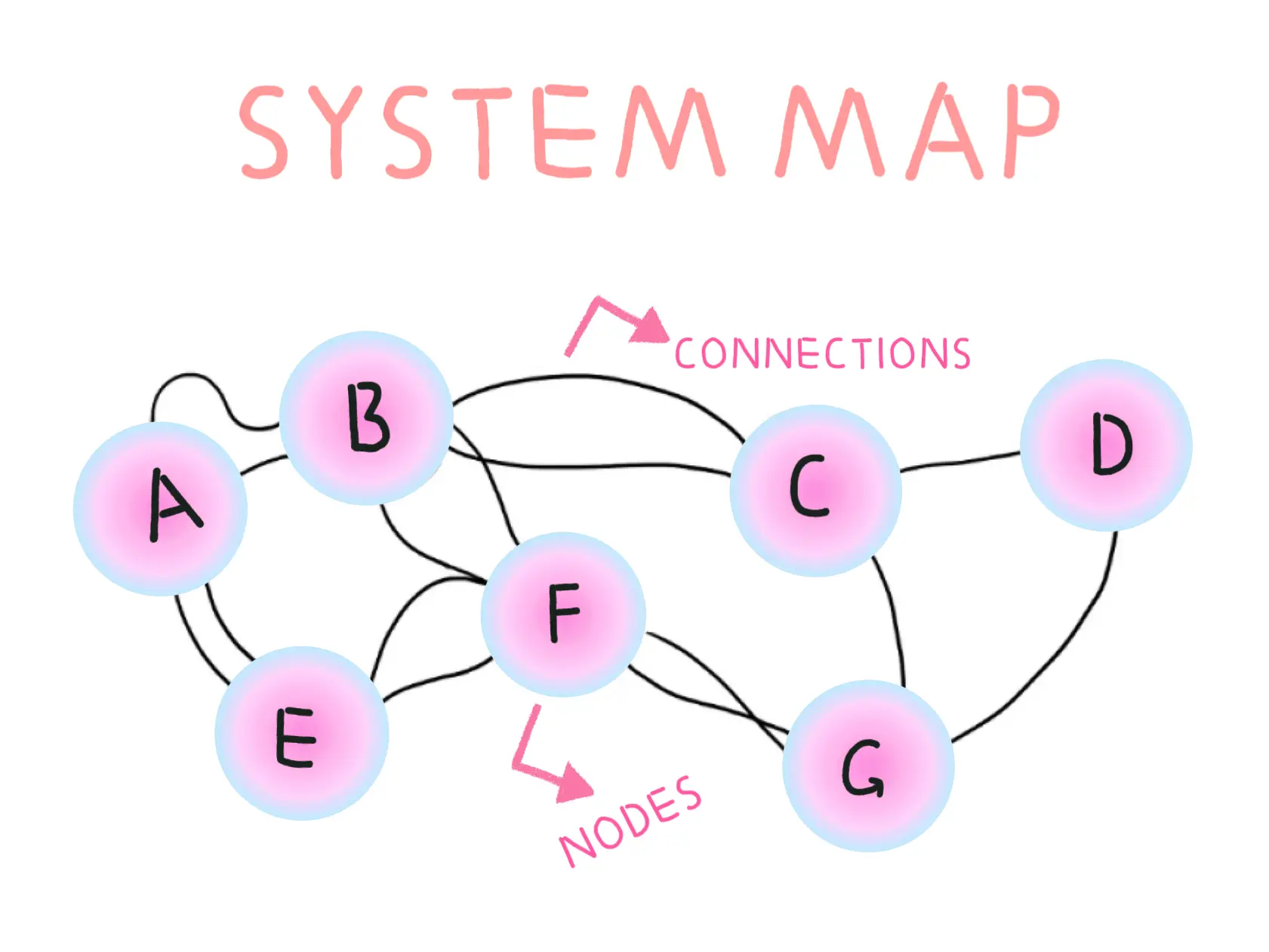
This blog explores seven powerful tips to help create clear and insightful maps of interconnected systems, guiding you in understanding intricate relationships within these systems.
Researcher @ University of Cambridge

Discover seven incredible ways mindmaps can transform software development projects, making them more organized, collaborative, and innovative.
Education Consultant